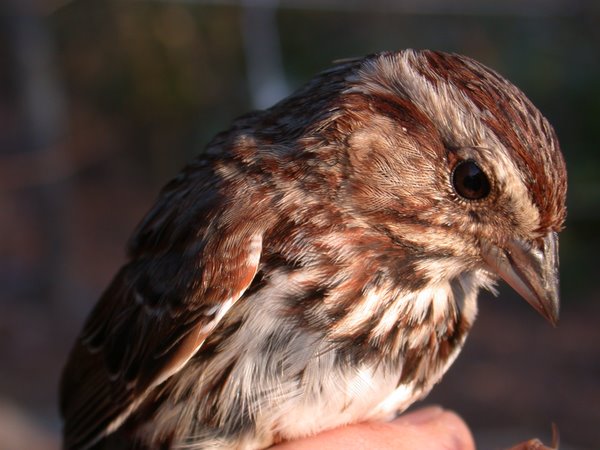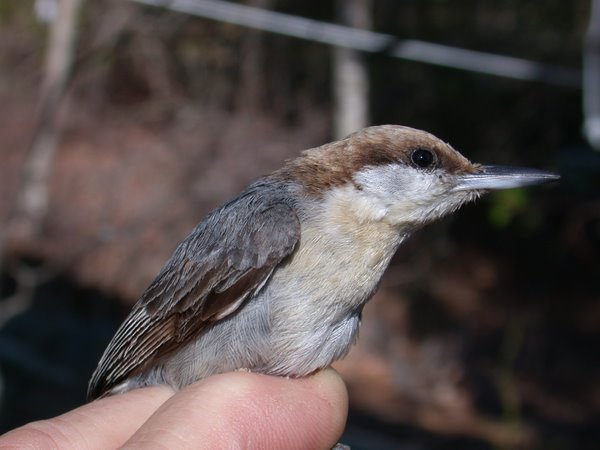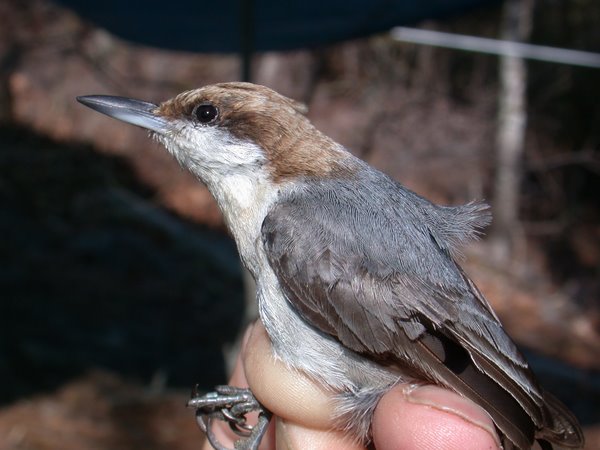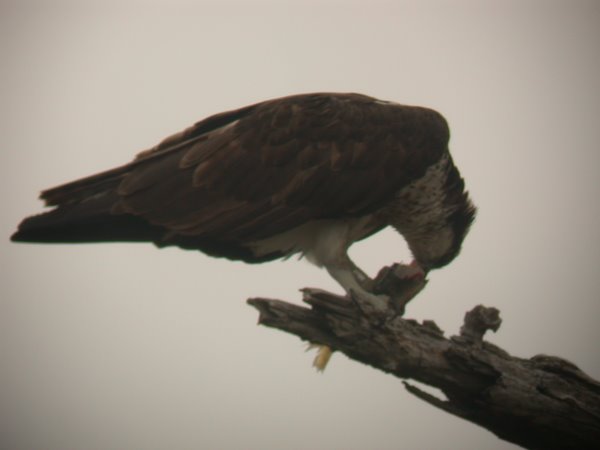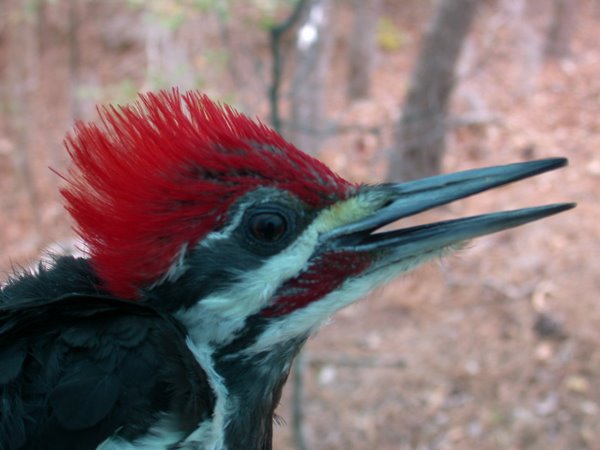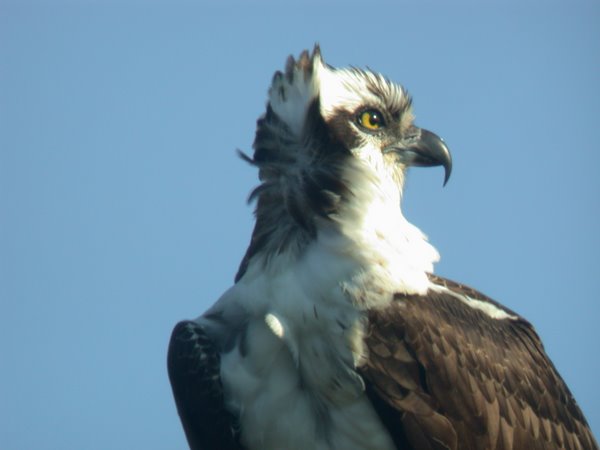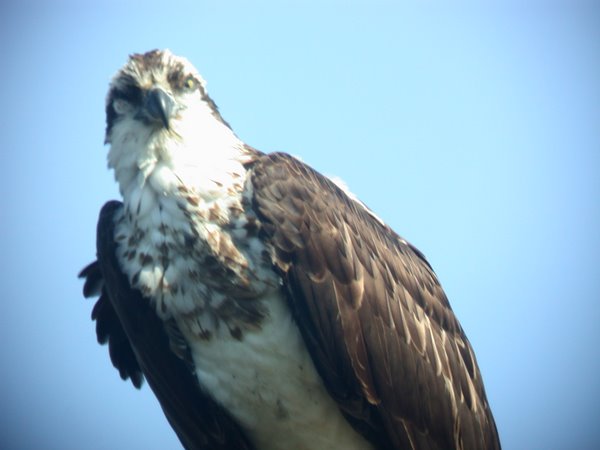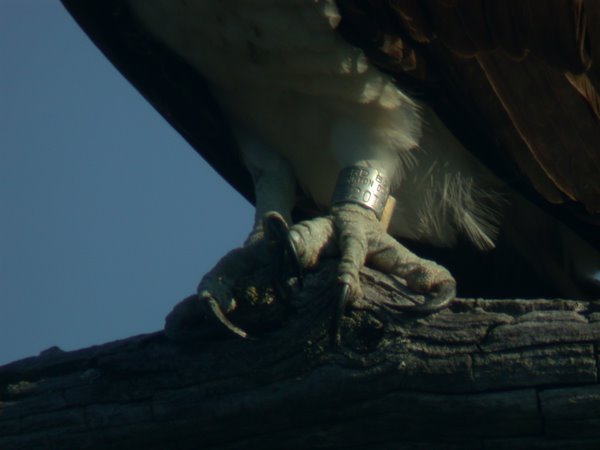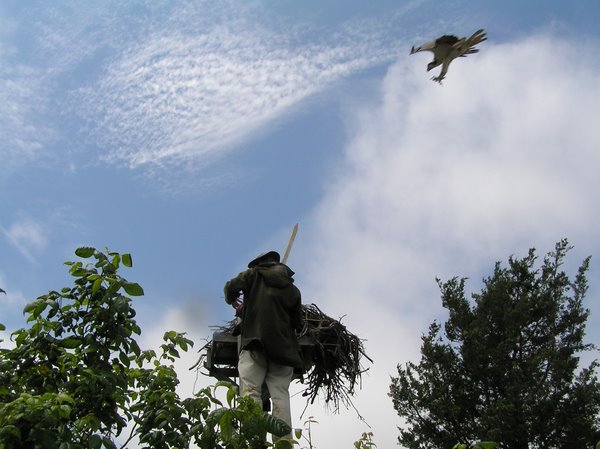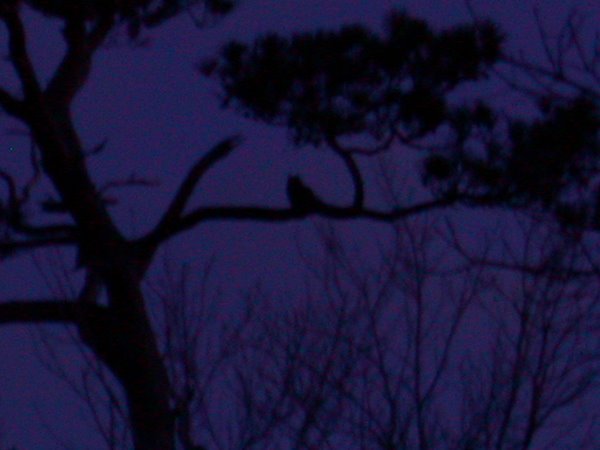Somewhat confusing these metal bird bands. Most are nine digits. Hummingbird bands have only six (the band is, well, that tiny). Large bands, as used on eagles and osprey, it turns out, can have either eight or nine digits. This morning, while dining on fresh fish, the female Osprey ("fish hawk" was once their common English name) displayed her band to be of the eight number variety. So 788-20124 it is! Once advised, Dr. Bob Reilly of Coastal Virginia Wildlife Observatory, www.cvwo.org, promptly placed a call to the Bird Banding Lab in Maryland.
After checking the database once and then again, the BBL advised Dr. Reilly that this very Osprey, 788-20124, was banded as a nestling somewhere in Maryland by David Brinker, a biologist who works for the State of Maryland, on.............................the sixth day of July in the year --------------------------1992.
Remarkable. As I learn more of this individual bird, I shall pass the information along.
There were signs of new activity at the banding station today. A Hermit Thrush was netted, followed by an Orange-crowned Warbler. And then came a woodpecker. Not the quiet, small ones you see at your feeder or suet ball over the winter, not even close. Instead, on the last net run of the day appeared a screaming, thrashing, clawing, chisel-wielding, handsome, male, second-year Pileated Woodpecker. See their images below.
Peter
Showing posts with label BBL. Show all posts
Showing posts with label BBL. Show all posts
Wednesday, March 21, 2007
Tuesday, March 20, 2007
Marked Birds Can Turn Up Anywhere, Anytime...
Tuesday, March 20, 2007.
Like today, perched on a dead oak tree next to her mate not fifty yards from the banding station in the brilliant morning sunlight. The pair of Osprey almost seemed curious about what I was doing under the ugly blue tarp which covers the picnic tables which comprise our field station. Having banded a few early morning passerines, I put my spotting scope on one bird and then the other. A United States Geological Survey metal band is on the left tarsus of the female. (The female has a brown feathered necklace which distinguishes her from her mate.)
At first I can only make only few digits of the band through my scope. Then he leaves the dead limb and she fidgets and scratches and diddles about. Finally she adjusts her back to absorb the morning sun more completely and flexes a wing like a dog stretches its legs after arising. In time, eight of the nine digits are verified. The numbers are ?788-20124. Now we can learn something of the life history of this wild bird. And we can add something to that history. Incrementally, we will add to knowledge of the natural world of which human beings are but a part.
How is this possible? Within the U.S. Department of the Interior is the U.S. Geological Survey. Within that agency is the Bird Banding Lab ("BBL"). The BBL maintains a central database of all banded birds, with and without color markers. There are a number of ways to report a band to them. On the web see: http://www.pwrc.usgs.gov/bbl/homepage/call800.htm Color-marked shorebirds may also be reported to another office in Canada. See: http://pw1.netcom.com/~djhoff/sbreport.html Each agency will advise the individual reporting the band information of information known about the banded bird.
Today was another slow day at the banding table. No new new species were banded. The last bird of the day was a second-year Pine Warbler. That was only fitting, as their loose trills filled the sunlight of what had become a 72F day.
Peter Doherty
Like today, perched on a dead oak tree next to her mate not fifty yards from the banding station in the brilliant morning sunlight. The pair of Osprey almost seemed curious about what I was doing under the ugly blue tarp which covers the picnic tables which comprise our field station. Having banded a few early morning passerines, I put my spotting scope on one bird and then the other. A United States Geological Survey metal band is on the left tarsus of the female. (The female has a brown feathered necklace which distinguishes her from her mate.)
At first I can only make only few digits of the band through my scope. Then he leaves the dead limb and she fidgets and scratches and diddles about. Finally she adjusts her back to absorb the morning sun more completely and flexes a wing like a dog stretches its legs after arising. In time, eight of the nine digits are verified. The numbers are ?788-20124. Now we can learn something of the life history of this wild bird. And we can add something to that history. Incrementally, we will add to knowledge of the natural world of which human beings are but a part.
How is this possible? Within the U.S. Department of the Interior is the U.S. Geological Survey. Within that agency is the Bird Banding Lab ("BBL"). The BBL maintains a central database of all banded birds, with and without color markers. There are a number of ways to report a band to them. On the web see: http://www.pwrc.usgs.gov/bbl/homepage/call800.htm Color-marked shorebirds may also be reported to another office in Canada. See: http://pw1.netcom.com/~djhoff/sbreport.html Each agency will advise the individual reporting the band information of information known about the banded bird.
Today was another slow day at the banding table. No new new species were banded. The last bird of the day was a second-year Pine Warbler. That was only fitting, as their loose trills filled the sunlight of what had become a 72F day.
Peter Doherty
Labels:
BBL,
bird banding,
color band,
osprey,
red knot,
USGS
Subscribe to:
Posts (Atom)
